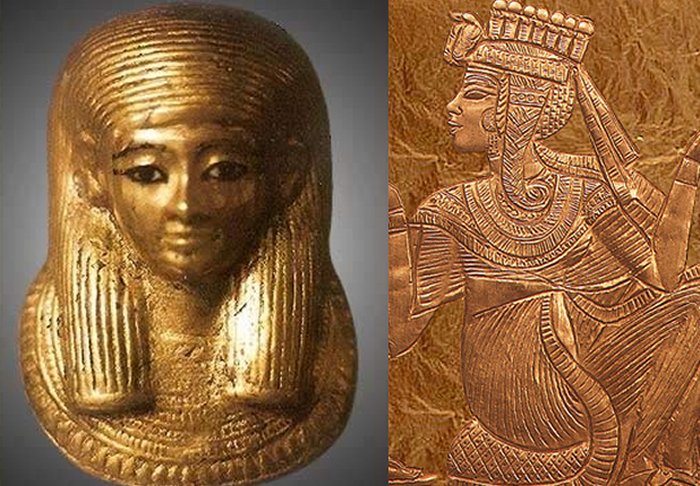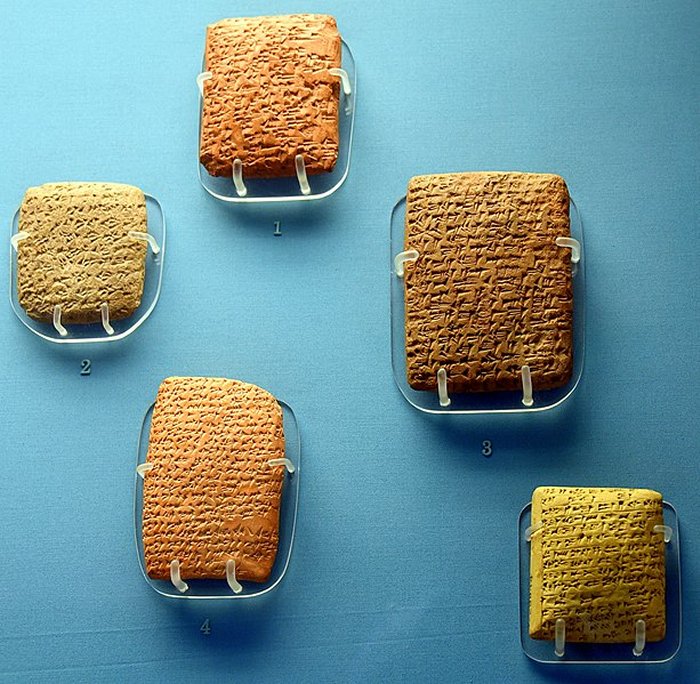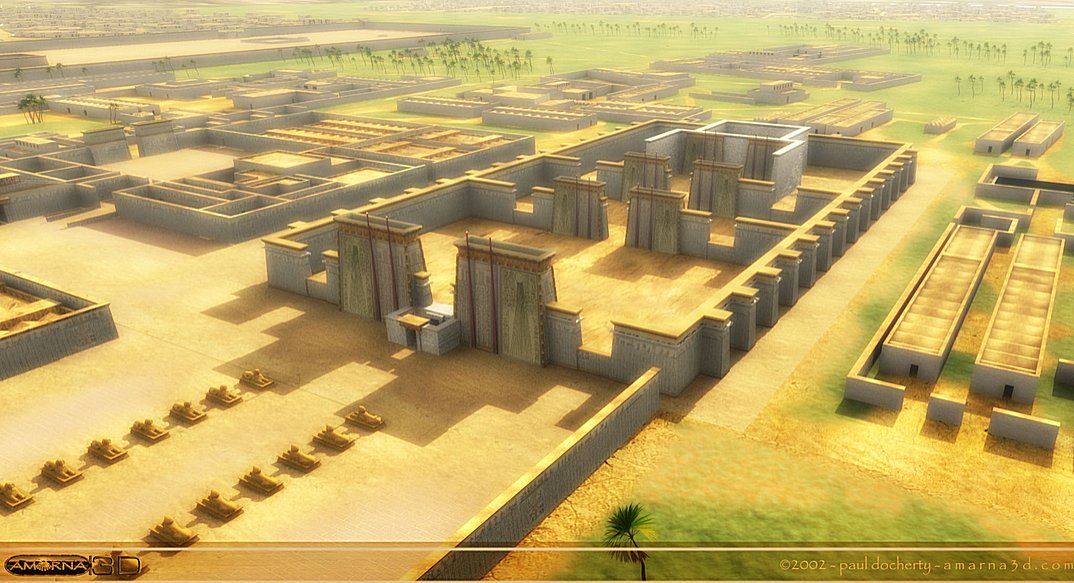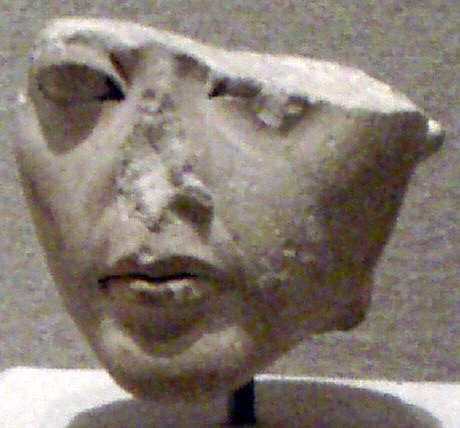Mystery Of Dakhamunzu And The Zannanza Affair – Was Queen Ankhesenamun Hiding Her Identity?
Ellen Lloyd - AncientPages.com - Who was Dakhamunzu? This is a question Egyptologists and historians are still trying to answer. Historical records reveal that Dakhamunzu played an important role in the history of ancient Egypt, and yet, so little is known about her.
Dakhamunzu May Have Been Nefertiti, Meritaten Or Ankhesenamun
Unraveling the identity of Dakhamunzu is like solving a detective story. It has been suggested that Dakhamunzu may have been Queen Nefertiti who suddenly mysteriously vanished after being elevated to near-equal status by pharaoh Akhenaten.
Queen Ankhesenamun - Credit: Public Domain
Other researchers propose Dakhamunzu was actually Meritaten, the Great Royal Wife to Pharaoh Smenkhkare. A third option is that Dakhamunzu was Ankhesenamun, Tutankhamun’s wife who died under mysterious circumstances.
From a historical perspective, it is important to learn more about Dakhamunzu in order to reconstruct certain events that occurred during the late Eighteenth Dynasty.
Reconstructing this historical period is difficult because at the time there was an ongoing struggle for power between Egypt, Mitanni, and the Hittites. Most of our knowledge about this period comes from the Amarna letters, written in Akkadian language.
Examples of "The Amarna Letters", discovered in 1887 . There are 382 known clay cuneiform tablets, whose contents shed light on Egyptian relations with Babylonia, Assyria, Mitanni, the Hittites, Syria, Palestine, and Cyprus. They are important for establishing both the history and chronology of the period. Credit: Osama Shukir Muhammed Amin FRCP(Glasg) - CC BY-SA 4.0
These mostly diplomatic letters, with a few myths and epics, contain information related to the reigns of pharaoh Akhenaten of the 18th Dynasty of Egypt and his wife Nefertiti, and Amenhotep III (1402-1364).
Dakhamunzu is often mentioned in connection to the Zannanza affair.
What Was The Zannanza Affair?
As Ancient Pages wrote in another article, Ankhesenamun was the daughter of Egyptian queen Nefertiti and Akhenaten. When she was 13-year-old she married her half-brother pharaoh Tutankhamun. The couple appears to have had two miscarried daughters.
Pharaoh Akhenaten’s Tell el-Amarna (or simply Amarna) was the short-lived capital built by the ‘heretic’ Pharaoh Akhenaten and abandoned shortly after his death (c. 1332 BCE).
Reconstruction of Amarna and the Temple which was close to the Pharaoh’s quarters on the left. Credits: Paul Docherty Principal Lecturer in 3D CG Teesside University
When Pharaoh Tutankhamun died at the age of 18, his wife found herself in a very difficult situation, surrounded by much older ambitious men. Queen Ankhesenamun wanted to continue the royal bloodline of Amarna and wrote a desperate letter to Suppiluliumas I, the King of the Hittites.
This was a surprising decision because Suppiluliumas I was her people’s worst enemy. Historians suggest Ankhesenamun wrote to the Hittite king using the name Dakhamunzu when she signed the letter.
Her letter reads:
“My husband has died and I have no son. They say about you that you have many sons. You might give me one of your sons to become my husband. I would not wish to take one of my subjects as a husband... I am afraid.”
King Suppiluliumas I was reluctant for a start but after sending an envoy to verify her claim and confirming the letter was genuine, he eventually decided to send his son Zannanza to Egypt to marry the late Tutankhamun’s wife. It seems like a wise decision at the time. Zannanza would become a new pharaoh and Egypt could become part of the Hittite empire.
But this plan failed because Zannanza never even reached the Egyptian border before he was murdered. It remains unknown how he died and who killed him.
King Suppiluliumas I accused Ay, the new pharaoh of Egypt of the murder of his son, but Ay denied the accusations. The event ended badly. The Hittites attacked Egyptian settlements in Syria and sick prisoners, brought back to Hattusa spread an epidemic that led to the death of many people, including King Suppiluliumas I.
Armarna era statuette head thought to represent Ankhesenamun, sister, and wife to Tutankhamun. Credit: Keith Schengili-Roberts - Public Domain
No-one listened to Queen Ankhesenamun’s protest when she refused to marry pharaoh Ay. She became his wife and she suddenly vanished shortly after the marriage. Queen Ankhesenamun died under mysterious circumstances somewhere between 1325 B.C and 1321 B.C. Was she murdered by Pharaoh Ay who may have been responsible for the death of the Hittite prince Zannanza?
What really happened to Queen Ankhesenamun remains an ancient unsolved mystery.
The riddle of Dakhamunzu is also unsolved. There is no further information about the life and death of Dakhamunzu.
Some historians speculate a draft letter written by King Suppiluliumas I may hold vital clues to the fate of Dakhamunzu.
The letter is a reply from the Hittite King and addressed to an unnamed pharaoh. From the correspondence, it seems that Dakhamunzu was forced to marry against her own wish. This suggests Dakhamunzu could have been Queen Ankhesenamun.
As Juan Antonio Belmonte explains in his research paper, there are several candidates who could have been the real Dakhamunzu.
- Ankhesenamun as Nebkheperure’s widow, the traditionally accepted and, apparently, only apparently, the easiest one.
- Queen Nefertiti as widow of Akhenaten, but just as Great Royal Wife.
- Nefertiti as ruler Ankhetkheperure Neferneferuaten upon the death of her husband when she would have taken the throne as ‘King’ Semenkhkare.
- Nefertiti as Ankhetkheperure, but on the death of Semenkhkare, a variant of the previous one.
- Meritaten as widow of her father Akhenaton, proposed by Krauss in the seventies for the first time.
- Nefertiti as regent queen upon the death of her husband.
- Meritaten as Ankhetkheperure, but upon the death of her husband Semenkhkare.
- Kiya, a dark queen of the period.
- a more recent theory suggests that Dakhamunzu was princess Neferneferuaten Tasherit, fourth daughter of Akhenaten and Nefertiti, converted in coregent of her father and acting as queen Neferneferuaten, widow of her father.
The personality behind Dakhamunzu is a very complex issue due to the complicated history of the Amarna period.
Unless Egyptologists find more evidence it is unlikely we will learn any time soon about the fate of Dakhamunzu.
Written by Ellen Lloyd – AncientPages.com
Updated on June 29, 2021
Copyright © AncientPages.com All rights reserved. This material may not be published, broadcast, rewritten or redistributed in whole or part without the express written permission of AncientPages.com
Expand for referencesGüterbock, H.G., "The Deeds of Suppiluliuma as told by his son, Mursilli II", Journal of Cuneiform Studies, 10 (1956).
Juan Antonio Belmonte - DNA, Wine & Eclipses: the Dakhamunzu Affaire
More From Ancient Pages
-
 On This Day In History: King Louis XVI Of France Was Formally Arrested And Declared An Enemy Of The People – On August 13, 1792
News | Aug 13, 2016
On This Day In History: King Louis XVI Of France Was Formally Arrested And Declared An Enemy Of The People – On August 13, 1792
News | Aug 13, 2016 -
 Sacred Crystals Of The Cherokee – Myths, Traditions And History Explained
Featured Stories | Jun 3, 2019
Sacred Crystals Of The Cherokee – Myths, Traditions And History Explained
Featured Stories | Jun 3, 2019 -
 King Lud – Mysterious Founder Of London And His Connection To The Tuatha De Danann
Featured Stories | Oct 21, 2021
King Lud – Mysterious Founder Of London And His Connection To The Tuatha De Danann
Featured Stories | Oct 21, 2021 -
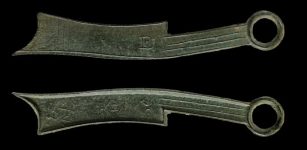 Scientists Decipher 2,300-Year-Old Chemistry Formulas Revealing Ancient Metallurgy Was More Complex Than Previosuly Thought
Ancient Technology | Aug 10, 2022
Scientists Decipher 2,300-Year-Old Chemistry Formulas Revealing Ancient Metallurgy Was More Complex Than Previosuly Thought
Ancient Technology | Aug 10, 2022 -
 Roman Marble Head Found In Lake Nemi Could Be From Caligula’s Legendary Ships
Archaeology | Jun 28, 2023
Roman Marble Head Found In Lake Nemi Could Be From Caligula’s Legendary Ships
Archaeology | Jun 28, 2023 -
 Petronella Oortman And Her Giant Dolls’ House
Featured Stories | Jul 10, 2019
Petronella Oortman And Her Giant Dolls’ House
Featured Stories | Jul 10, 2019 -
 Ancient Egyptians Invented World’s Oldest Egg Ovens And They Are Still In Use
Ancient History Facts | Jul 6, 2021
Ancient Egyptians Invented World’s Oldest Egg Ovens And They Are Still In Use
Ancient History Facts | Jul 6, 2021 -
 Thousands Of Sacred ‘Images’ With Unknown Signs Hidden In A Monastery Could Be World’s Oldest Alphabet
Featured Stories | Jun 9, 2021
Thousands Of Sacred ‘Images’ With Unknown Signs Hidden In A Monastery Could Be World’s Oldest Alphabet
Featured Stories | Jun 9, 2021 -
 Illuminati: Facts And History About The Secret Society
Featured Stories | Mar 30, 2017
Illuminati: Facts And History About The Secret Society
Featured Stories | Mar 30, 2017 -
 New Details On Neanderthals – Revealed By Museum Exhibition In Norway
Archaeology | Jun 16, 2023
New Details On Neanderthals – Revealed By Museum Exhibition In Norway
Archaeology | Jun 16, 2023 -
 Ancient Mysteries And Curious Legends Of Chimney Rock And Grandfather Mountain In North Carolina
Featured Stories | Feb 5, 2024
Ancient Mysteries And Curious Legends Of Chimney Rock And Grandfather Mountain In North Carolina
Featured Stories | Feb 5, 2024 -
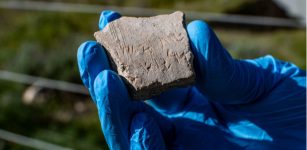 Rare Discovery Of A 2,500-Year-Old Ancient Receipt With The Name Of King Darius The Great
Archaeology | Mar 2, 2023
Rare Discovery Of A 2,500-Year-Old Ancient Receipt With The Name Of King Darius The Great
Archaeology | Mar 2, 2023 -
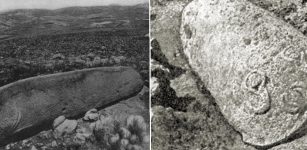 Mysterious 2000-Year-Old Carved Vishap Stone Monuments Of Armenia
Featured Stories | Dec 13, 2016
Mysterious 2000-Year-Old Carved Vishap Stone Monuments Of Armenia
Featured Stories | Dec 13, 2016 -
 Dancing Around The Throne: Networking In TheTime Of King William I
Ancient Traditions And Customs | Jul 4, 2023
Dancing Around The Throne: Networking In TheTime Of King William I
Ancient Traditions And Customs | Jul 4, 2023 -
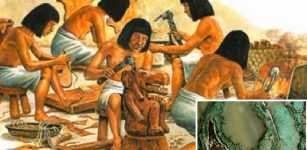 What Ancient Civilization Discovered Metallurgy?
Ancient Technology | Sep 19, 2017
What Ancient Civilization Discovered Metallurgy?
Ancient Technology | Sep 19, 2017 -
 Daedalus And Icarus Who Forever Remained An Example For Many Dreamers
Featured Stories | Sep 11, 2023
Daedalus And Icarus Who Forever Remained An Example For Many Dreamers
Featured Stories | Sep 11, 2023 -
 Why Coyote Wanted People To Die For Their Own Good – A Caddo Nation Legend
Featured Stories | Jun 18, 2021
Why Coyote Wanted People To Die For Their Own Good – A Caddo Nation Legend
Featured Stories | Jun 18, 2021 -
 Ancient DNA Analysis Shows How The Rise And Fall Of The Roman Empire Shifted Populations In The Balkans
DNA | Dec 8, 2023
Ancient DNA Analysis Shows How The Rise And Fall Of The Roman Empire Shifted Populations In The Balkans
DNA | Dec 8, 2023 -
 On This Day In History: Planet Neptune Officially Discovered – On Sep 23, 1846
News | Sep 23, 2016
On This Day In History: Planet Neptune Officially Discovered – On Sep 23, 1846
News | Sep 23, 2016 -
 Mysterious Yamacutah – A Sacred Native American Indian Shrine
Artifacts | Sep 18, 2020
Mysterious Yamacutah – A Sacred Native American Indian Shrine
Artifacts | Sep 18, 2020

